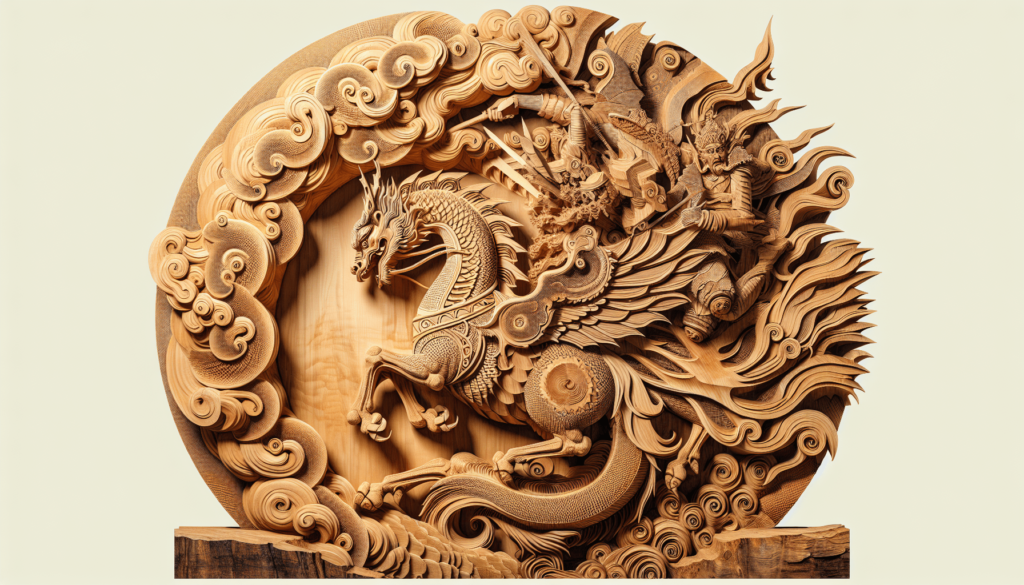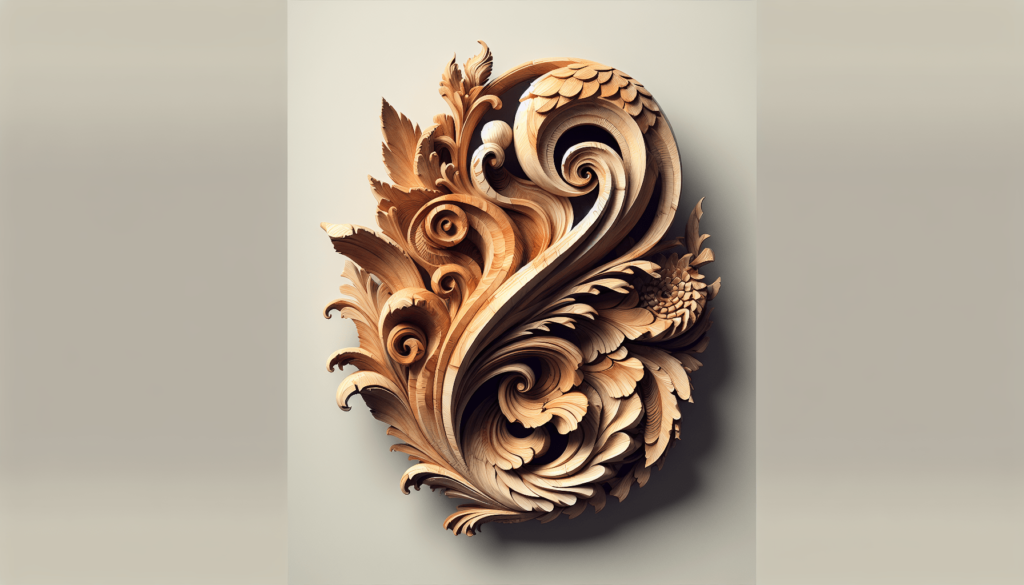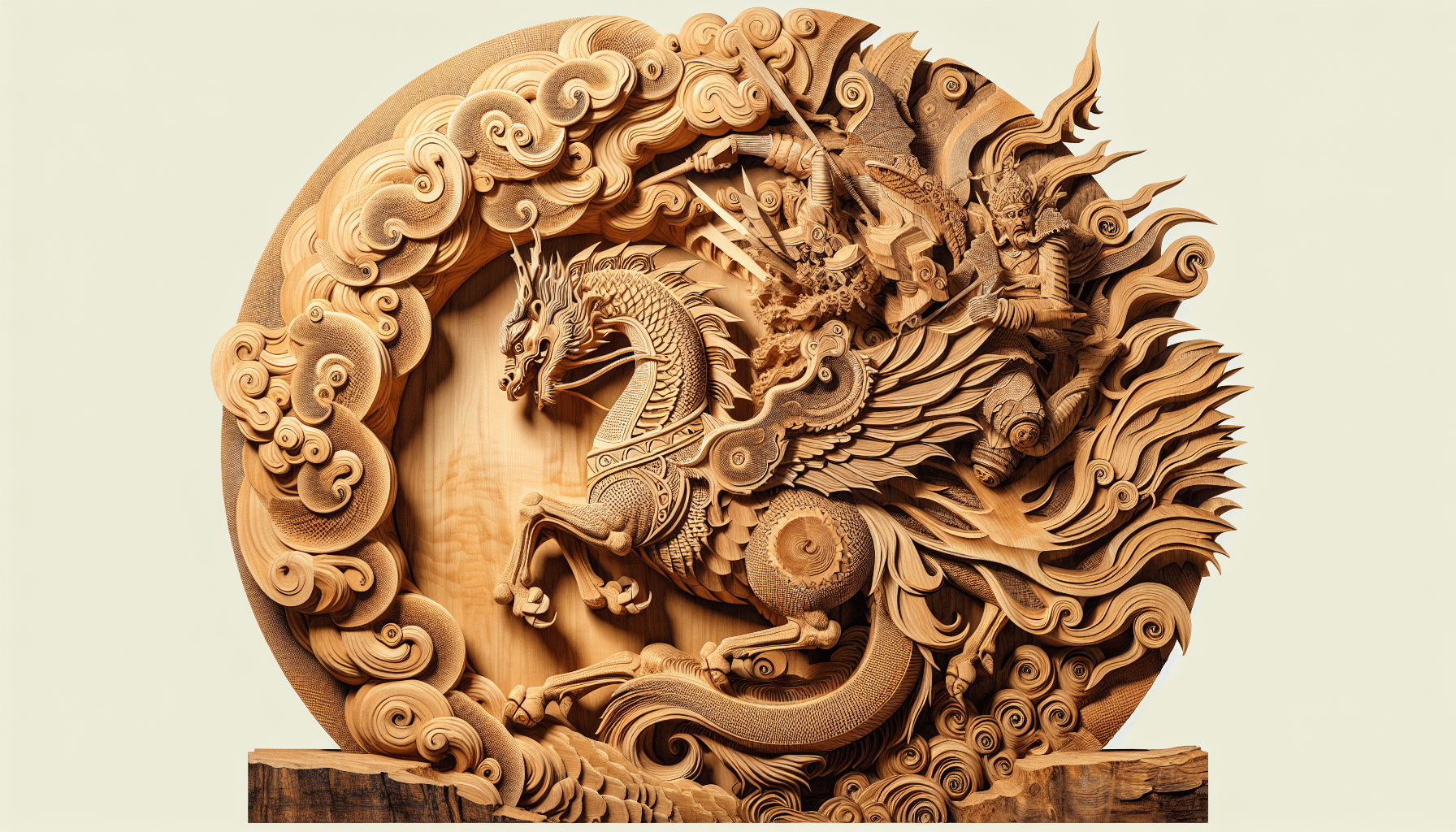When I first stumbled upon the world of wood art, I was captivated by the sheer diversity and creativity it encompasses. From intricate carvings to finely crafted sculptures, wood art—often referred to as woodworking or woodcraft—holds a unique place in the art world. Each piece tells its own story, shaped by the natural patterns in the wood and the artist’s vision. This fascinating form of art celebrates both the beauty of the material and the skill of the artisan, melding nature and creativity in a timeless dance. Have you ever come across a carved wooden sculpture and wondered, “What is art made of wood called?” It’s a fascinating question and one that’s worth exploring. As someone who’s spent more than a few hours admiring everything from elaborate totem poles to delicate wooden jewelry boxes, I can tell you that wooden art is as varied and nuanced as any other art form. So, let’s dive deep into this rich subject and discover what makes wooden art so special.

Defining Wooden Art
Wooden art, also known as wood art or woodcraft, encompasses any artwork or craft that is created using wood as the primary medium. This can range from artistic carvings and inlays to practical items like furniture that have been decorated or designed to be aesthetically pleasing.
Various Types of Wooden Art
To better grasp the array of wooden art, let’s break it down into some main categories. These categories can help you understand the different forms and uses of wooden art.
| Type | Description |
|---|---|
| Carvings | Involves shaping wood using tools to form figures or designs. |
| Turnings | Created using a lathe, this involves shaping the wood around a central axis. |
| Inlays | Decorative pieces made by embedding materials into the surface of the wood. |
| Marquetry | Similar to inlays, but involves creating intricate designs with pieces of wood veneer. |
| Pyrography | The art of decorating wood with burn marks using heated tools. |
| Sculpture | Large, often freestanding pieces carved or constructed from wood. |
| Furniture | Functional items that also serve as decorative art pieces. Totem poles, ornate chairs, etc. |
Carvings: The Heartbeat of Wooden Art
Wood carvings are perhaps the most iconic form of wooden art. From ancient tribal carvings to contemporary sculptures, carving has been a way to tell stories, record history, and express creativity.
Tools of the Trade
One cannot speak of carving without mentioning the tools involved. From chisels and gouges to knives and mallets, the tools used can vary widely.
Common Carving Tools
| Tool | Purpose |
|---|---|
| Chisels | Used for making cuts and shaping wood. |
| Gouges | Ideal for creating curves and hollows. |
| Knives | Often used for detailed work and fine carving. |
| V-tools | Great for intricate designs and adding texture. |
| Mallets | Used to apply extra force while carving. |
Techniques and Styles
The way artists use these tools can vary greatly, leading to different styles and techniques. Some popular styles include whittling, relief carving, and chip carving.
Whittling
Whittling involves carefully shaving off pieces of wood to create a design. Think of it as the sculpting equivalent of doodling. It’s a relaxing and straightforward form of carving where you can let your imagination take the reins.
Relief Carving
Relief carving involves carving figures or designs into a flat piece of wood, leaving a contrasting “raised” design that stands out. It’s like making a 3D picture from a flat sheet. This technique is widely used for decorative panels and architectural elements.
Chip Carving
Chip carving is like the wood’s version of pointillism. Artists remove small chips from the surface in intricate geometric patterns. It’s a sort of wooden tattoo, if you will.
Turning: Spinning Into Art
Woodturning is another captivating form of wooden art. This involves placing the wood on a lathe and spinning it while tools are used to shape it.
The Lathe: Your Turntable for Wood
A lathe can be likened to a potter’s wheel for wood. It’s a machine that spins the wood around a central axis, allowing you to sculpt it as it rotates. Lathes come in various sizes and can handle everything from miniature objects to large structures.
Types of Woodturning Projects
One of the most common things I hear from people new to woodturning is, “What can I make?” The possibilities are almost endless, but here are a few popular projects:
| Project | Description |
|---|---|
| Bowls | Simple yet elegant, bowls are a staple of woodturning. |
| Vases | Decorative or functional, vases are a popular project. |
| Pens | Small but rewarding, turning pens is a satisfying craft. |
| Candle Holders | Perfect for beginners and experienced turners alike. |
| Table Legs | Functional and often ornate, an essential woodworking task. |
Inlays and Marquetry: Adding That Extra Flair
Both inlays and marquetry are techniques that introduce other materials or contrasting pieces of wood into a wooden surface to create decorative designs. Although similar, they are distinct in their own rights.
The Art of Inlays
Inlays involve embedding pieces of material, such as metal, ivory, or another type of wood, into carvings or surfaces of wood. The result is a contrasting and often intricate pattern that provides a striking visual.
Steps in the Inlay Process
- Design: Sketch out your design on the wood.
- Cutting: Carefully cut out sections of the wood where materials will be inlaid.
- Fitting: Ensure the inlay materials fit perfectly into the cut sections.
- Adhering: Use adhesives to secure the inlays in place.
- Sanding and Finishing: Polish the surface to a smooth finish.
Marquetry: Wood Veneer Wonders
Marquetry takes the concept of inlays to the next level by using various pieces of veneer to create elaborate designs. It’s almost like assembling a complex wooden puzzle.
Marquetry vs. Inlays: Key Differences
| Inlays | Marquetry |
|---|---|
| Embeds materials into solid wood. | Uses thin layers (veneers) to create designs. |
| Often less intricate, focuses on contrast. | Can be very intricate, with pieces forming images. |
| Common in furniture and jewelry boxes. | Widely used in fine furniture and art panels. |

Pyrography: Let’s Get Fired Up
Pyrography, or woodburning art, is a technique that involves burning designs onto wood surfaces using heated tools. It’s like drawing on wood with a really hot pen.
The Magic of Heat
With pyrography, the heat does the talking. By varying the temperature and types of tips used, you can create a wide range of textures and shades.
Basic Tools and Materials
| Tool | Purpose |
|---|---|
| Pyrography Pen | The main tool, often comes with interchangeable tips. |
| Tips | Various shapes and sizes for different effects (lines, shading, etc.). |
| Sandpaper | Prepares the wood surface for burning. |
| Stencils | For those of us who need a little help staying inside the lines. |
Techniques and Tips
There are many ways to get creative with pyrography, from simple line work to complex shading and texturing.
Some Pointers on Creating Pyrography
- Temperature Control: Different temperatures create different shades and depths.
- Steady Hand: Patience and practice help to maintain control while burning lines.
- Surface Preparation: Smooth, sanded wood gives the best results.
- Safety First: Always work in a well-ventilated area to avoid inhaling fumes.
Wooden Sculpture: From Small to Monumental
Wooden sculptures can range from small, delicate pieces to monumental works of art. These sculptures are often carved from a solid block of wood or assembled from multiple pieces.
Techniques in Wooden Sculpture
Whether chiseling away at a massive tree trunk or piecing together smaller components, creating wooden sculptures involves a few key methods.
Traditional Carving
Traditional carving is the more classical method of creating sculptures. Think Michelangelo, but with a chainsaw.
Assemblage
Assemblage involves creating a sculpture by piecing together different wooden parts. It’s a bit like creating a 3D collage. This technique allows artists to combine different types and textures of wood, giving the sculpture a unique and dynamic appearance.
Wooden Furniture: When Function Meets Form
Furniture can be far more than just functional; it can also be a form of wooden art. From the flowing lines of Art Nouveau to the functional beauty of Scandinavian designs, wooden furniture can elevate any space.
Artistic Furniture Styles
Different styles of wooden furniture have emerged over the years, each bringing unique artistic elements to practical items.
Art Nouveau
This style is known for its flowing, organic lines and often incorporates natural forms. It’s like furniture that’s stepped out of a fantasy forest.
Arts and Crafts
The Arts and Crafts movement focuses on simplicity, craftsmanship, and often features hand-made wooden furniture. This style shuns the ornate for the sake of achieving a straight-talking, honest design.
Scandinavian
Scandinavian design is all about minimalism and functionality. Clean lines and simplicity reign supreme, but that doesn’t mean the pieces lack character or artistic value.
Pioneering Furniture Artists
Several artists have gained recognition for their work in wooden furniture. If you’re looking to dive deeper into this realm, here are a few names to start with:
- Gustav Stickley: Known for his straightforward, functional designs.
- Alvar Aalto: Famous for his modernist approach.
- George Nakashima: Celebrated for his organic style and masterful craftsmanship.
Preservation and Care
One thing I’ve learned over the years is that wooden art, while sturdy, needs proper care to last. The beauty of wood is that it’s a living material that can change over time. However, this also makes it susceptible to damage if not properly maintained.
Basic Care Tips
- Dust Regularly: Keep your wooden pieces dust-free to avoid accumulation.
- Avoid Direct Sunlight: Prolonged exposure can cause fading or cracking.
- Use Proper Cleaners: Avoid harsh chemicals. Use cleaners specifically designed for wood.
- Humidity Control: Keep wooden art in a stable environment to prevent warping or cracking.
Why Wooden Art?
Wooden art offers a unique connection to nature and a versatility that’s hard to match. Whether it’s the satisfaction of carving a piece from scratch or the tactile pleasure of running your hands over a smooth wooden surface, there’s something deeply fulfilling about this form of art.
The Emotional Connection
There’s an inherent warmth and organic feel to wooden art that makes it resonate differently compared to other materials. Each piece of wood is unique, with its own grain and character, which adds to the intimate nature of wooden art.
Environmental Considerations
Additionally, when sustainably sourced, wood is an environmentally friendly material. It’s renewable, biodegradable, and can serve as a sustainable resource if harvested responsibly.
In the end, art made of wood, whether it’s a delicate piece of marquetry or a grand wooden sculpture, captures a blend of craftsmanship, creativity, and a deep connection to the earth. Next time you see a wooden artwork, take a moment to appreciate the skill and love that went into its creation.
So, what is art made of wood called? It’s called captivating, it’s called intricate, it’s called timeless. But most importantly, it’s called a testament to human creativity and the marvels of nature.

